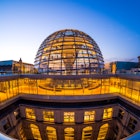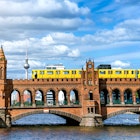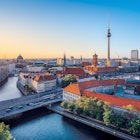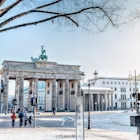
Dec 8, 2025 • 7 min read
Make your euros go further in Berlin with these top free experiences.

Dec 8, 2025 • 7 min read
Make your euros go further in Berlin with these top free experiences.

Dec 3, 2025 • 5 min read
Berlin’s bohemian attitude and fantastic roster of activities makes it a fun and stress-free destination for families.

Nov 28, 2025 • 6 min read
Get to the heart of thriving, multicultural Berlin through its exciting, lively, lovely neighborhoods.

Nov 28, 2025 • 6 min read
Make the most of your time in Berlin, a city with much to see and do, with our ultimate guide to the best time to visit.

May 14, 2025 • 7 min read
How do you choose between charming Amsterdam and vibrant Berlin for a vacation or city break? Two Lonely Planet writers can help.

Apr 2, 2025 • 7 min read
From historic treasures to contemporary street art, here are Berlin’s best experiences.

Feb 3, 2025 • 7 min read
Berlin, the world's electronic music capital, is a major destination for clubbers. Here's our guide to the best places to go.

Jan 10, 2024 • 6 min read
Lonely Planet’s Destination Editor Sandie Kestell returned to her former home, Berlin, for two days. Here's what she spent.

Aug 16, 2023 • 5 min read
Germany’s capital is full of fabulous shops that you won’t find anywhere else.

Aug 7, 2023 • 4 min read
In Berlin, 24/7 spätis are a centerpiece of big nights out: here’s how to hang out, shop, pre-drink and party at them.

Jul 9, 2023 • 6 min read
Even though Berlin is an incredible city with lots to offer, its attractions don't cost the earth. Here's how to visit Berlin on a budget.

Jul 8, 2023 • 6 min read
With one of the top nightlife scenes in the world and fascinating historic sites to explore, here are Berlin's best experiences.

Aug 24, 2022 • 6 min read
Forget Berlin's nightlife, the daytime parties are where you want to be. Here’s an insider’s guide to afternoon raves.

Feb 11, 2022 • 6 min read
Berlin is a vibrant hub for freedom of expression, and more street art is appearing all the time. Here are the best places to see street art in the city.

Jan 28, 2022 • 7 min read
Read on for our guide to the best of Berlin’s over 200 museums, including our picks for art museums, history museums, contemporary-art galleries and more.

Jan 17, 2022 • 4 min read
From vintage postcards to secondhand clothing, Berlin's flea markets have everything a bargain hunter needs, plus atmosphere, live music and beers.

Oct 20, 2021 • 5 min read
Choosing the right destination for a holiday with teens is tough, but Rhonda Carrier found Berlin to be the ideal place.

Nov 19, 2020 • 5 min read
Lorna Cannon, founder of Refugee Voices Tours, explains how her guides share their stories of coming to Berlin as refugees.

Apr 29, 2020 • 5 min read
The show's filming locations set the scene for a story of repression and self-discovery.

Mar 13, 2020 • 6 min read
Berlin’s gastro landscape now tastier than ever before. Here are our recommendations for budget, fine and uniquely Berlin dining.

Mar 1, 2020 • 4 min read
Writer Ryan Barrell was drawn to Germany's capital for its unparalleled art scene and vibrant culture. Here's his guide to exploring Berlin like a local.

Feb 7, 2020 • 4 min read
World famous for its divisive wall, lively nightlife and street art, there’s a lot to like about Berlin. But its darker side of its history might be the most…